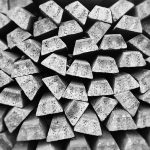Investing in precious metals like gold, silver, platinum, and palladium can add stability and diversification to your investment portfolio. In today’s article, you’ll find helpful advice in creating your precious metals portfolio.
1. Define your goals and risk tolerance
- Determine why you’re investing in precious metals. Is it to hedge against inflation, protect against economic downturns, diversify your holdings, or for long-term growth?
- Assess how much risk you’re comfortable with. This will influence the percentage of your portfolio allocated to precious metals and the specific metals you choose.
2. Diversify within precious metals
- Gold: Often considered a safe-haven asset and a hedge against inflation and economic uncertainty.
- Silver: More affordable by weight than gold and has significant industrial uses, particularly in electronics and renewable energy.
- Platinum: Rarer than gold and silver, with demand driven by the automotive industry (catalytic converters), according to The Royal Mint.
- Palladium: Also used in catalytic converters and jewelry, its scarcity has pushed its value higher.
3. Choose your investment methods
- Physical Bullion: Direct ownership of coins, bars, rounds, and ingots provides tangible security. Requires secure storage and insurance.
- Precious Metal ETFs: Invest in funds that track the price of precious metals. Offers liquidity and convenience without physical ownership.
- Mining Stocks: Invest in companies involved in the exploration and production of precious metals. Carries higher risk due to market and operational factors.
- Precious Metals IRAs: Hold physical bullion within a tax-advantaged account. Requires a custodian to manage the account and adhere to IRS regulations.
4. Allocate and manage
- Allocation: A common recommendation is 5-15% of your total investments. Adjust this based on your risk tolerance, investment horizon, and market conditions.
- Dollar-cost Averaging: Buy metals at regular intervals to minimize the impact of price volatility.
- Monitor and Rebalance: Regularly review your portfolio, stay informed about market conditions, and adjust your allocation as needed.
5. Secure your investments
- Reputable Dealer: Purchase physical metals from established dealers with strong reviews and transparent pricing.
- Secure Storage: If holding physical metals, consider a home safe, bank safety deposit box, or professional vault storage services.
- Insurance: Protect your physical holdings against theft or damage with a comprehensive insurance policy.
6. Understand the risks
- Volatility: Precious metal prices can fluctuate due to market conditions.
- Liquidity: Less common metals may have limited liquidity compared to gold and silver.
- Storage and Insurance Costs: Physical metals incur these ongoing expenses.
- No Income Generation: Unlike stocks or bonds, precious metals don’t offer dividends or interest payments. Gold is unlike many traditional investments such as stocks or bonds that generate income through dividends or interest payments. Instead, its value lies in other key characteristics:
- Store of value: Gold has a long history of being used as a store of value, meaning it’s an asset that maintains its worth over time. Unlike fiat currencies, governments can’t simply print more gold, contributing to its scarcity and stability.
- Hedge against inflation and currency devaluation: Gold is often considered a safe haven asset during periods of economic uncertainty, inflation, or currency devaluation. When the value of paper money declines, investors may turn to gold as a way to preserve their wealth.
- Geopolitical diversification: Gold can offer diversification in a portfolio as it’s not subject to political risks or sanctions and is not affected by issues like global monetary systems.
- Tangibility and limited supply: Gold is a physical asset with a limited supply, which contributes to its perceived value and can be appealing to some investors.
While gold doesn’t generate a yield, its ability to act as a safe haven, preserve wealth, and diversify a portfolio are reasons why investors choose to hold it, particularly during uncertain economic times.








